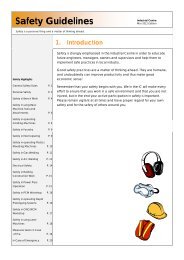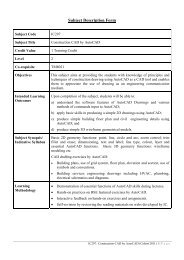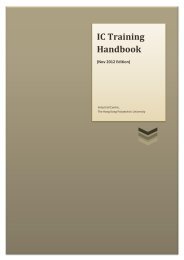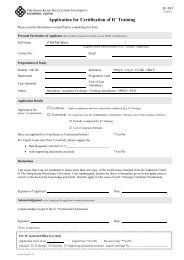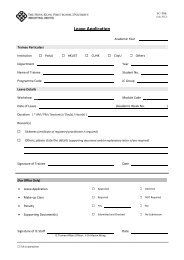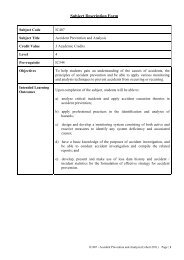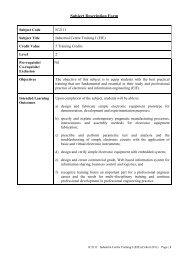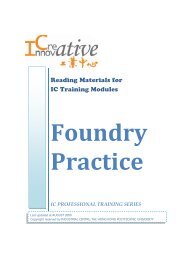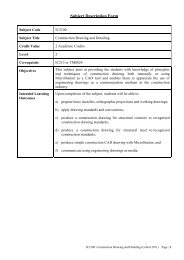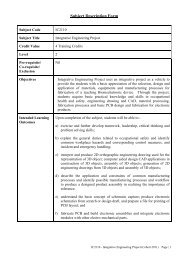Plastics Technology Practice - The Hong Kong Polytechnic University
Plastics Technology Practice - The Hong Kong Polytechnic University
Plastics Technology Practice - The Hong Kong Polytechnic University
You also want an ePaper? Increase the reach of your titles
YUMPU automatically turns print PDFs into web optimized ePapers that Google loves.
<strong>Plastics</strong> <strong>Technology</strong> <strong>Practice</strong><br />
• Specification of Moulding Machines<br />
Shot size and clamping force are usually used to describe a machine. We need<br />
to consider both shot size and clamp tonnage when choosing a machine.<br />
i) Shot size is the maximum amount of material the machine will inject<br />
per cycle (single shot) and the unit is ounces (oz) or grams (g). <strong>The</strong><br />
standard for shot size measurement is general purpose polystyrene<br />
moulding in single shot.<br />
ii) Clamping Force is the maximum force a machine can apply to a<br />
mould. <strong>The</strong> unit of clamping force is tons.<br />
3.1.3 Part Design for injection moulding<br />
Part design is a very important in injection moulding, good part design can reduce<br />
the manufacturing cost and reduce the defects during manufacturing.<br />
• Uniform Wall Thickness<br />
Uniform wall thickness should be the primary consideration in part design<br />
because different wall thickness causes different shrinkage which increases the<br />
difficulties dimension control and cause serious warpage in the injection<br />
moulded products.<br />
• Draft Angles<br />
Draft Angles are added in the internal<br />
and external walls for the mould part to<br />
be ejected from the mould. Draft angle<br />
requirement are smaller in external walls<br />
than internal walls.<br />
• Radii/Fillet<br />
Internal sharp corners and notches are the leading cause of failure in injection<br />
moulded thermoplastic parts. To avoid the problem occurred, radii / fillet is<br />
commonly employed to all “sharp” feature.<br />
Page 16<br />
IC Professional Training



